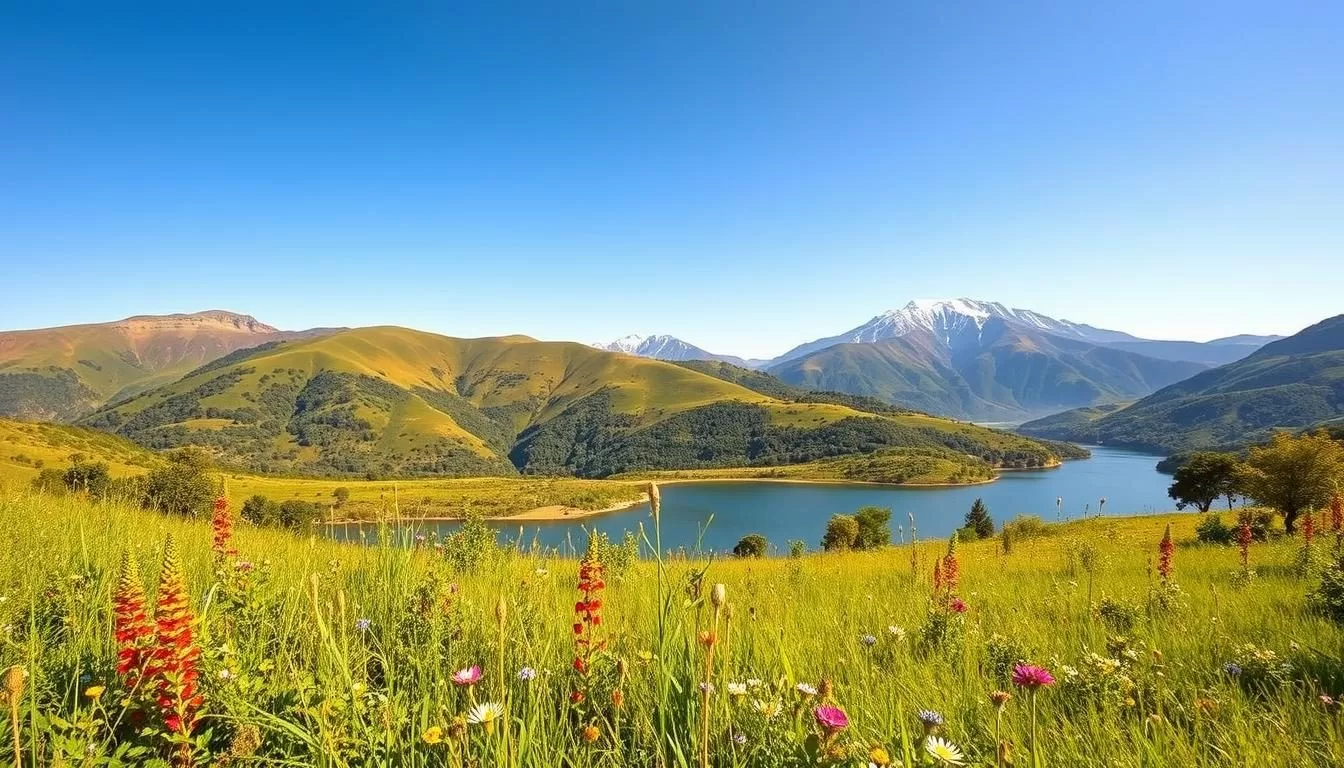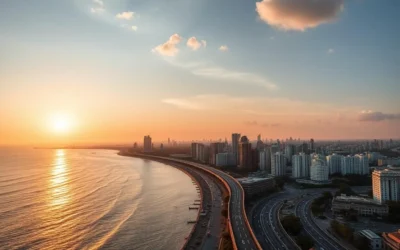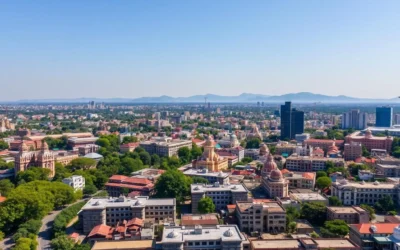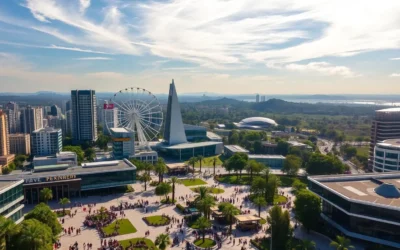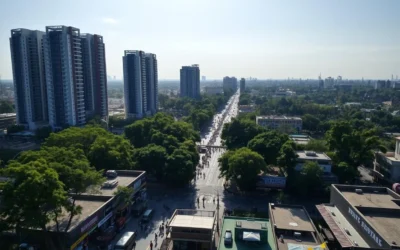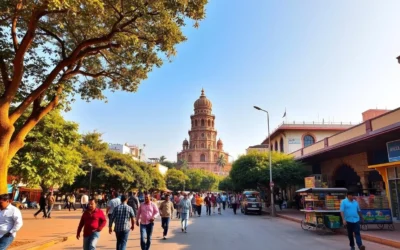✓ Accommodations✓ Flights✓ Rental Cars✓ Tours & Activities
When you’re planning a trip to Maharashtra, understanding the diverse climate patterns is crucial for a memorable experience.
The state’s varied weather conditions offer different experiences throughout the year, from the pleasant winters to the vibrant monsoons.
This comprehensive guide will help you navigate Maharashtra’s seasonal variations to plan your perfect trip. You’ll discover the best time to visit and the activities suited for each season.
Whether you’re interested in cultural exploration, outdoor adventures, or culinary experiences, timing your visit right can enhance your overall experience in this diverse Indian state.
Understanding Maharashtra’s Climate Patterns
Understanding the climate patterns of Maharashtra requires a look at its geography. The state’s diverse landscape, ranging from coastal areas to mountainous regions, significantly influences its weather conditions.
Geographic Influences on Weather
Maharashtra’s geography is varied, with the Western Ghats mountain range running along its western edge. This range creates a rain shadow effect, resulting in significant differences in rainfall between the coastal regions and the inland areas. The coastal regions tend to have a more moderate climate due to the influence of the sea.
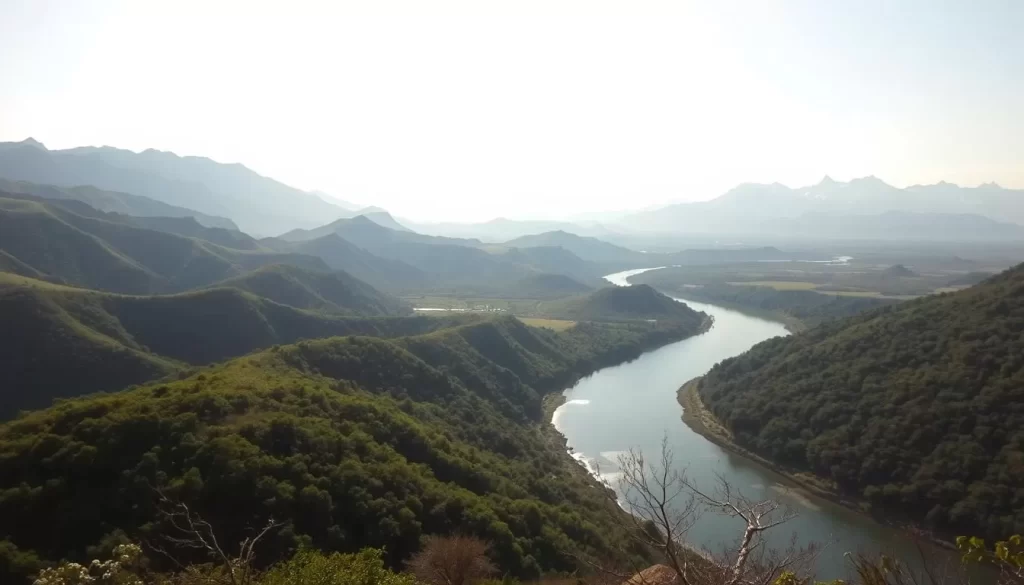
The Three Distinct Seasons
Maharashtra experiences three primary seasons: winter (November to February), summer (March to May), and the monsoon season (June to October). Each season offers distinctly different experiences for travelers. The table below summarizes the characteristics of each season:
| Season | Months | Characteristics |
|---|---|---|
| Winter | November to February | Mild temperatures, clear skies |
| Summer | March to May | High temperatures, sea breezes in coastal areas |
| Monsoon | June to October | Heavy rainfall, lush greenery, waterfalls |
Understanding these seasons helps you plan your trip according to your preferences.
Winter Season: The Golden Period (November to February)
Maharashtra’s winter season, spanning from November to February, is a golden period that offers a mix of pleasant weather and vibrant cultural experiences. You can enjoy the state’s rich heritage and natural beauty without the harsh weather conditions that are common during other times of the year.
Temperature Ranges and Comfort Levels
During the winter months, Maharashtra experiences a significant drop in temperature, making it an ideal time to visit India. The average temperature ranges from 12°C to 25°C, providing a comfortable climate for tourists to explore the state’s various attractions.
Popular Winter Destinations in Maharashtra
Some of the most popular destinations in Maharashtra during the winter include the hill stations like Mahabaleshwar and Panchgani, known for their pleasant weather and scenic beauty. You can also visit the cultural hubs like Pune and Mumbai, which host various festivals and events during this time.
Winter Festivals Worth Planning Around
Winter in Maharashtra is a time of celebration, with numerous festivals taking place across the state. You can experience the rich culture of Maharashtra by attending events like the Ellora-Ajanta Festival, Nagpur Orange Festival, or the Kala Ghoda Arts Festival.
| Festival | Location | Time |
|---|---|---|
| Ellora-Ajanta Festival | Aurangabad | December |
| Nagpur Orange Festival | Nagpur | December |
| Kala Ghoda Arts Festival | Mumbai | February |
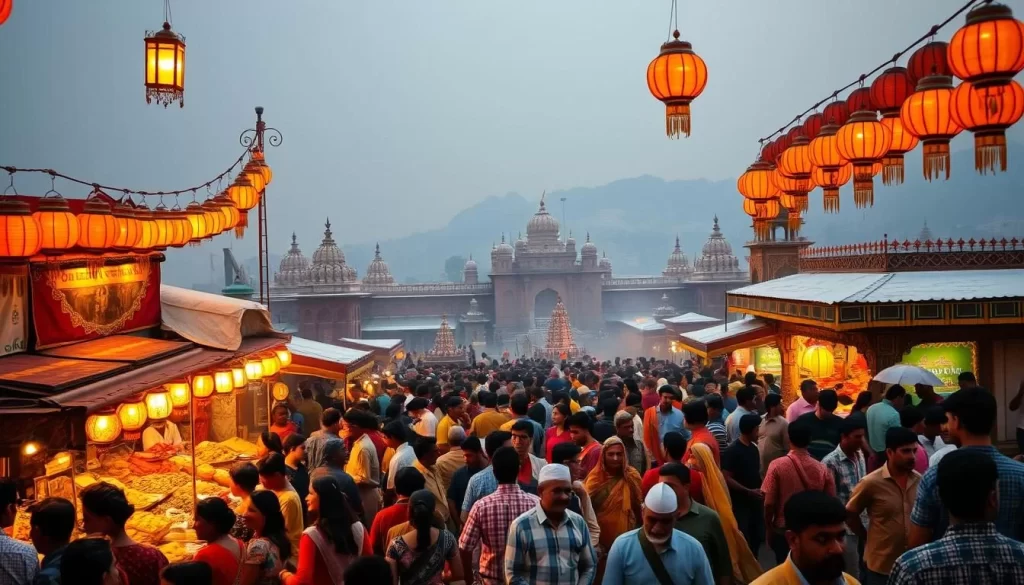
Summer Season: Heat and Opportunities (March to May)
The summer season in Maharashtra, while known for its heat, offers several advantages for travelers willing to brave the temperatures. This period, from March to May, is particularly significant for wildlife enthusiasts.
Managing the Heat in Urban Areas
In urban areas like Mumbai and Pune, the heat can be managed by staying hydrated and planning activities during the cooler parts of the day. Many indoor attractions and air-conditioned cafes provide welcome respite from the heat.
Hill Stations as Summer Retreats
Maharashtra’s hill stations, such as Mahabaleshwar and Panchgani, serve as excellent retreats from the summer heat. These locations offer cooler climates, scenic landscapes, and a range of outdoor activities.
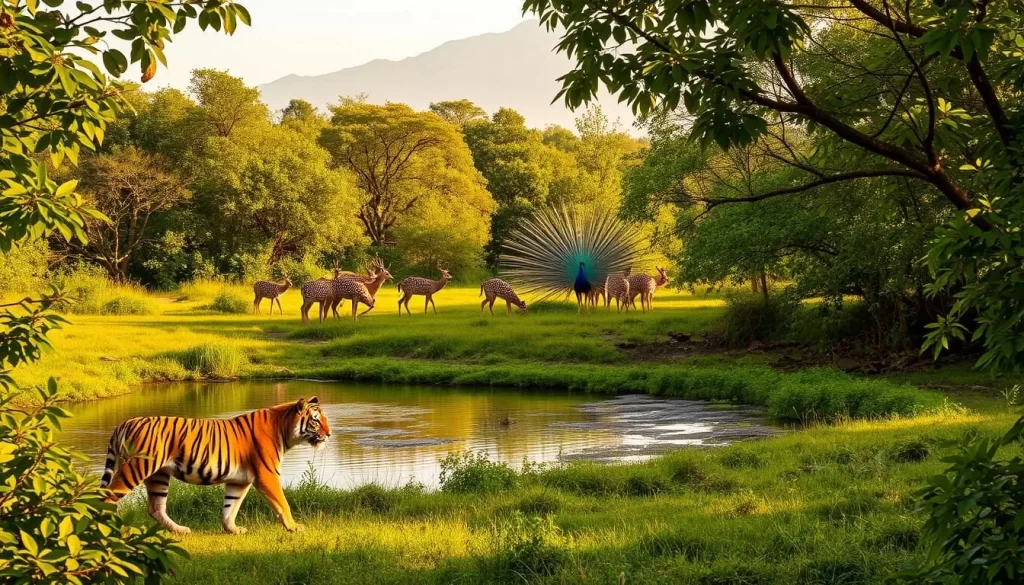
Summer Wildlife Viewing Advantages
Summer is considered the best time for wildlife viewing in Maharashtra’s national parks and sanctuaries. As water sources diminish, animals congregate around the remaining waterholes, making sightings more predictable.
- The reduced foliage during summer months provides better visibility through the forest.
- Tadoba Andhari Tiger Reserve and other sanctuaries offer excellent opportunities for spotting elusive creatures like tigers.
- Early morning and late afternoon safari drives are ideal for wildlife photography.
| National Park/Sanctuary | Best Time for Wildlife Viewing | Notable Species |
|---|---|---|
| Tadoba Andhari Tiger Reserve | March to May | Tigers, Leopards |
| Navegaon National Park | April to June | Tigers, Sloth Bears |
| Nagzira Wildlife Sanctuary | March to May | Tigers, Gaurs |
Monsoon Season: The Green Transformation (June to October)
Maharashtra’s monsoon season is a time of renewal, where the rain washes away the dry spell, revealing a greener, more serene side of the state. While it’s true that traveling throughout most of India during the monsoon can be challenging due to disrupted transport services, Maharashtra offers unique experiences that make it also good to visit during this time.
Rainfall Patterns Across Maharashtra
The monsoon brings varied rainfall patterns across Maharashtra. The Western Ghats receive heavy rainfall, making them lush and green. Understanding these patterns can help you plan your trip effectively.
Monsoon Travel Challenges and Solutions
Traveling during the monsoon can be challenging, but being prepared can make a big difference. It’s essential to check weather forecasts and road conditions before heading out. Many popular destinations have adapted to the monsoon season, offering unique experiences.
Experiencing Maharashtra’s Waterfalls and Lush Landscapes
The monsoon awakens hundreds of seasonal waterfalls throughout the Western Ghats. Places like Tamhini Ghat, Kune Falls, and Bhushi Dam become spectacular destinations. The Valley of Flowers in Kaas Plateau blooms spectacularly, and Malshej Ghat attracts flamingos and other migratory birds. The ancient forts take on a mystical quality, surrounded by monsoon clouds and lush greenery. It’s a great time visit India and experience the natural beauty of Maharashtra, with its abundant water bodies and lush landscapes.
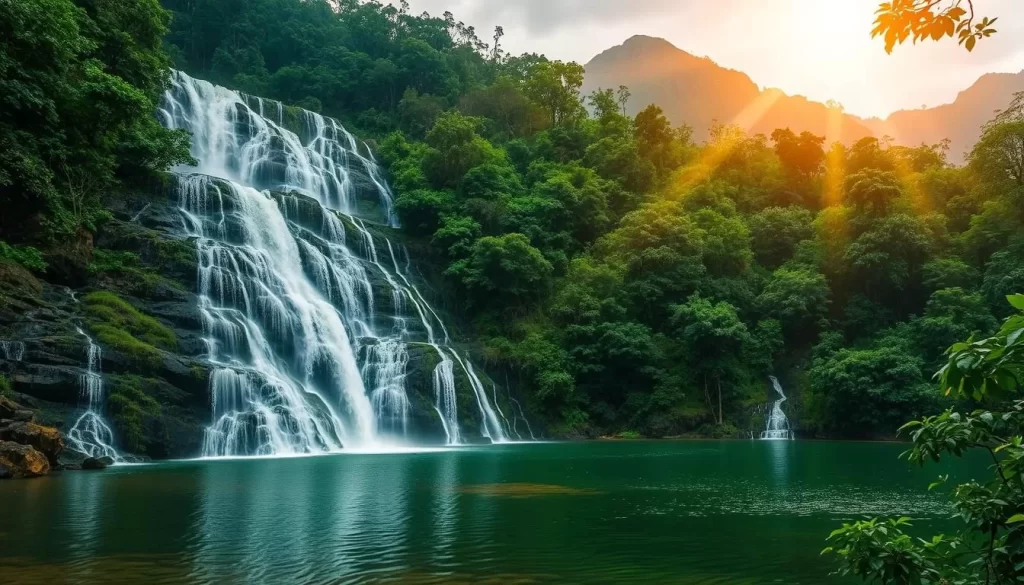
Maharashtra, India: Best Months for a Weather-Savvy Trip
For a weather-savvy trip to Maharashtra, selecting the appropriate months is essential for a memorable journey. The state’s diverse climate means that the best time to visit varies significantly across different regions.
October-November: The Perfect Balance
The months of October and November offer a perfect balance of comfortable temperatures and minimal rainfall, making them ideal for exploring Maharashtra. The weather is pleasant across most regions, allowing for a wide range of activities.
December-February: Ideal for Most Travelers
December and January are the busiest months, with comfortable daytime temperatures during winter, although nights can be quite chilly. This period is ideal for most travelers, with dry conditions and pleasant temperatures in regions like Mumbai and the Konkan coast.
Region-Specific Timing Recommendations
Different regions in Maharashtra have their best times to visit. For instance, Pune and the Western Ghats are comfortable from October to March, while the Vidarbha region is best visited from October to March as well, with good wildlife viewing in April and May. Understanding these region-specific timings can enhance your travel experience.
By choosing the right time for your visit based on the region and activities planned, you can have a more enjoyable and fulfilling trip to Maharashtra.
Regional Weather Variations Within Maharashtra
As you travel across Maharashtra, you’ll notice distinct regional weather variations. The state’s diverse geography, ranging from coastal areas to the Deccan Plateau, contributes to these differences. Understanding these regional weather patterns can help you plan your trip more effectively.
Coastal Maharashtra (Mumbai and Konkan)
Coastal Maharashtra, including Mumbai and the Konkan region, experiences a tropical climate influenced by its proximity to the Arabian Sea. The temperatures are generally moderate, with high humidity levels throughout the year. Summer months can be quite hot and humid, while winters are mild and pleasant. The monsoon season brings heavy rainfall to this region, making it lush and green.
Central Maharashtra (Pune and Surroundings)
Central Maharashtra, which includes Pune and its surroundings, has a relatively dry climate compared to the coastal region. Summer temperatures can soar, making it essential to stay hydrated and plan indoor activities during the peak heat hours. Winters are cool and pleasant, ideal for sightseeing. The monsoon season brings relief from the summer heat, with moderate rainfall.
Eastern Maharashtra (Vidarbha Region)
The Vidarbha region in eastern Maharashtra is known for its extreme temperatures. Winters can be quite cool, while summers are hot, with temperatures often exceeding 40°C (104°F). This region receives less rainfall than western Maharashtra, with a shorter monsoon season. The region’s wildlife sanctuaries, such as the Tadoba Andhari Tiger Reserve, are best visited during the winter months for comfort.
| Region | Summer | Winter | Monsoon |
|---|---|---|---|
| Coastal Maharashtra | Hot and humid | Mild and pleasant | Heavy rainfall |
| Central Maharashtra | Hot and dry | Cool and pleasant | Moderate rainfall |
| Eastern Maharashtra | Very hot | Cool | Less rainfall |
Planning Your Activities Around Maharashtra’s Weather
Understanding the seasonal weather patterns in Maharashtra can greatly enhance your travel experience. By planning your activities according to the weather, you can make the most of your trip.
Best Times for Outdoor Adventures
The best times for outdoor adventures in Maharashtra vary by season. Winter (November to February) is ideal for trekking and exploring the outdoors due to the pleasant weather. In contrast, summer (March to May) is better suited for visiting hill stations to escape the heat. For water activities and rafting, the monsoon season (June to October) can be exciting, but be cautious of the weather conditions.
Cultural Exploration and Weather Considerations
Cultural exploration is a significant part of traveling in Maharashtra. The festivals india celebrates during Diwali in October, making it a peak time for cultural experiences. However, this also means that popular destinations and tours might be more crowded. Visiting during the shoulder season can provide a more relaxed experience.
Culinary Experiences Through the Seasons
Maharashtra’s cuisine changes with the seasons, offering different specialties. For instance, winter brings harvest festivals with special foods like til-gul during Sankranti in January. Summer is the time for mango season, with Alphonso mangoes from Ratnagiri available from April to June. During the monsoon, enjoy piping hot vada pav and misal pav that complement the rainy weather.
| Season | Culinary Specialties | Activities |
|---|---|---|
| Winter | Til-gul, strawberries in Mahabaleshwar | Trekking, cultural festivals |
| Summer | Alphonso mangoes, jamun | Visiting hill stations |
| Monsoon | Vada pav, misal pav | Water activities, rafting |
Conclusion: Making the Most of Your Maharashtra Trip
The key to a memorable trip to Maharashtra lies in timing your visit to align with your preferences and the state’s varied weather conditions. For most travelers, the period from October to March provides the most comfortable conditions for exploring the diverse attractions of this vibrant state.
Each season in Maharashtra offers unique advantages. Winter brings comfortable exploration conditions, summer showcases hill stations at their best, and monsoon transforms the landscape with lush greenery and flowing waterfalls. Planning around major festivals in India can enhance your cultural immersion or help you avoid crowded periods.
To maximize your comfort, consider combining regions with complementary weather patterns. The shoulder seasons of October-November and February-March often provide the best balance of good weather, reasonable prices, and manageable crowd levels. With proper planning and the right expectations, any time can be the right time to discover the wonders of Maharashtra.
The above is subject to change.
Check back often to TRAVEL.COM for the latest travel tips and deals.
